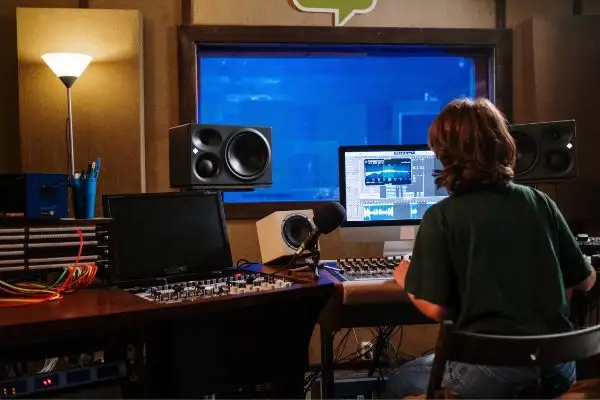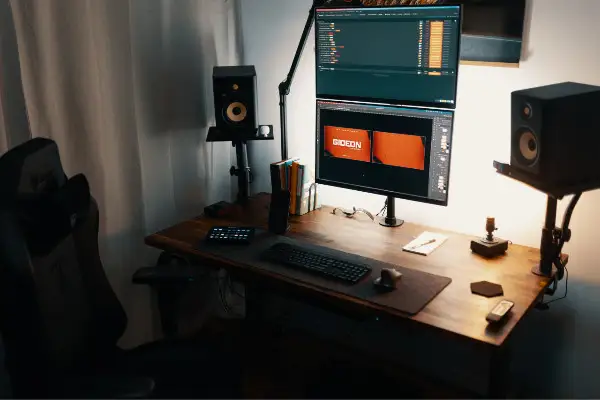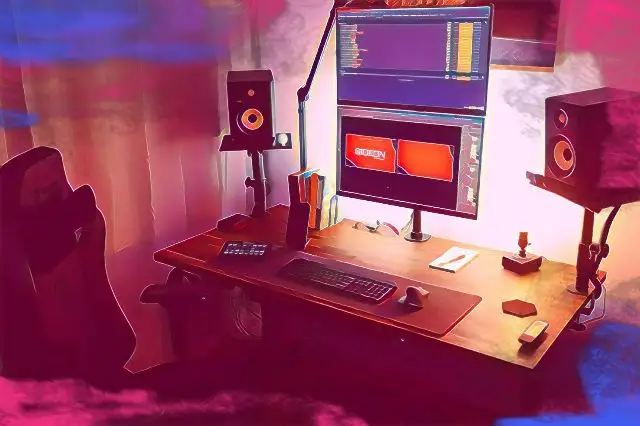As an audio engineer, building a balanced mix is not enough. All engineers should strive to build a dynamic, vibrant stereo mix that brings out the best in a song, allowing the listener to connect with the creation on another level.
Not sure where to start? Not to worry! Below, we'll detail exactly what stereo widening is and share some of the best tips to help you elevate your tracks to new heights.
What Is Stereo Widening?
In a nutshell, stereo widening is the process of making an audio signal feel well, wider, by strategically spreading sound across the left and right stereo channels. Stereo width can be achieved through several processes further outlined below like playing with pan position , audio effects and other processes during the mixing stage.
Understanding The Stereo Image
Grasping the true differences between mono and stereo width is a discussion in itself, but essential mono signals are captured with a single channel while stereo signals are recorded using two channels (left and right channels).
Take a listen to the difference between the sound quality of the signals:
You'll notice that mono version sounds more in the "middle" while the stereo mix expands to have a wider perceived feel. Though it can be difficult to articulate, it might be best for you to visualize the stereo field as outlined in this video:
The human ear can perceive the width, depth, and height of a sound based on the rate at which it receives sound waves. Therefore, by manipulating certain mixing parameters as outlined below, we can create a good stereo image by sculpting various sonic shapes across the entire mix.
9 Stereo Widening Tips for Better Mixes
Are you ready to take your stereo imaging skills to the next level? Here are several techniques you can use in your next track to create a wider stereo spread:
1. Use the Center To Focus
It can be tempting to transform all mono sounds across various pan positions in the stereo field, but part of stereo widening is understanding what should stay centered, or resist widening techniques.
Generally speaking, the lead vocal, drums, and bass lines are good mono candidates, though stereo field placement is largely dependent on the nuance of your song.
Before placing your sound sources within a specific position, try to determine which parts might do best mid channel or panned center. Create a mental map of where you'd like your sounds to be, and analyze reference tracks to see how other engineers went about creating width (or limiting it).
2. Limit Low End Frequency Spread
Generally speaking, you'll want to add width only to tracks that reside mainly in the upper mid to high-frequency range. Low frequencies can overpower a mix very quickly, especially when spread across stereo effects that may make them more apparent. Save your reverbs and delayed signal processing for those sounds and individual instruments concentrated around high frequencies.
3. Test Your Stereo Signal In Mono
Testing your final mix's mono compatibility is key since it helps you seek out any phasing or frequency balance issues. Regardless, it can also provide a point of reference to see what your stereo processing is actually doing. Many engineers swear by mixing their tracks in mono first and then moving to stereo as an effective sound design workflow.
4. Make Space
Make sure you're leaving lots of room for those high frequencies to grow and expand within your mix. Use comb filtering to take out any harsh frequencies, and consider cleaning up your side signal to make space for those panned frequencies. Check out those instruments and sounds like the kick drum and bass that are more prone to overpowering the mix.

5. Automate Left and Right Channels Over Time
Build a more dynamic track by taking the time to automate your stereo widening effects like panning and pitch shifting. Switch up your panning automation during sections of the song you'd like to call attention to.
Also, don't be afraid to throw in some new sounds far out in the stereo field. Adding in ear candy where you can far out in the left and right channels can certainly help your track feel larger.
6. Contrast Wide and Narrow Stereo Width
Pack more punch in your stereo width-heavy sections by angling them against more sparse sections with a narrow stereo image. A common technique is to open up a chorus right after a more narrow, mid-imaged verse and vice versa. Creating contrast can make your beats more interesting and make your song climax even more impactful.
7. Using Microshifts and the Haas Effect
Pitch shifting while double tracking is a great way to widen your stereo image. You can use pitch shifter plugins or adjust your duplicated track by a couple of cents for a wider effect.
You can also duplicate two tracks and make a very short delay on one to create a sound that's known as the Haas effect. This sound creates a phantom center, building depth and width to your vocals. Just be sure to check for phase issues with both methods. Any time you're duplicating the same signal and altering one or the other, you want to check to make sure your effects don't unintentionally cancel out the two sounds.
8. Double, Triple, Quadruple Track!
One of the easiest ways to widen one channel is to double track (or triple). In this technique, the same sound source is recorded on two different tracks with two different audio sources. When these separate audio sources are panned, they create width and depth. Double tracking can also be done artificially.
For instance, you could duplicate a lead vocal three times. Keep one channel mono in the center of the field, hard pan one to the left channel, and another to the right, and you'll instantly have lead vocals that pop.
9. Process As Groups And Individually
Lastly, don't forget that you can create width within subsets and groupings, not just on the master channel. Adding just a touch or surprising pockets of panning or pitch modulation on an otherwise looped track can keep a listener's interest over the course of a song.
Stereo Widening FAQs

Are you still trying to wrap your head around stereo width? Consider these commonly asked questions and answers:
What does stereo widening do?
Stereo widening increases the perceived width across the right and left channels of a stereo field. There are multiple ways to make a mix sound wider including panning and shifting tuning as discussed in this article.
Is stereo widening necessary?
Stereo widening isn't necessarily needed in every song - plenty of tracks still cling to the classic mono sound even today! However, most modern music utilizes the full scope of stereo channels to build a more dynamic, wide stereo image.
What does wide stereo mean?
A wide stereo image refers to the stereo track that has a perceived wide feel, or lots of sounds across the left and right channels of the human ear.
Enhancing stereo width is an amazing way to bring your track to new heights. Hopefully, this guide makes it easier for you to incorporate stereo sounds into your mixes. Have fun experimenting with the stereo field of your mixes!





